Illinois Shows Us What the Road to Clean Energy Should Look Like
Here’s how a formidable clean energy coalition helped pass the most equitable climate legislation in the country—and developed a blueprint for other states to follow.
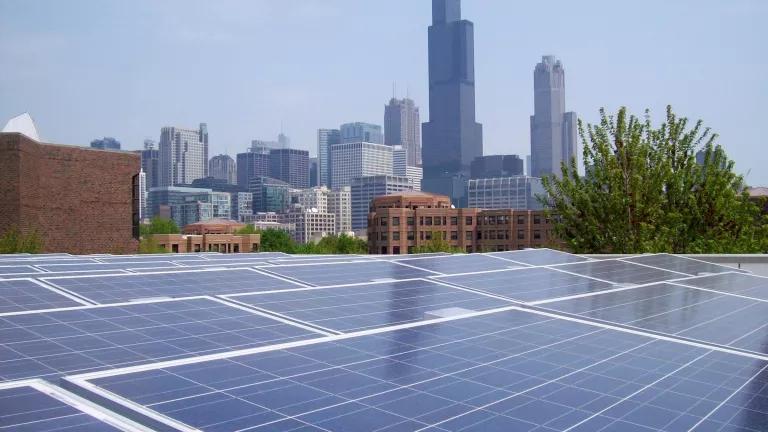
Rooftop solar panels on the campus of University of Illinois, Chicago
Archigeek via Flickr, CC-BY-NC-ND 4.0
Roughly 10 years ago, nearly two dozen coal plants dotted the state of Illinois and less than 2 percent of its power generation came from renewables like wind and solar. For a Midwestern state with a long affinity for fossil fuels, a 100 percent clean energy future seemed like a moon shot. “It was considered laughable, at least in some circles,” says NRDC’s J.C. Kibbey, an Illinois clean energy advocate. “Although I think we always knew it had to happen if we were going to avoid the worst impacts of climate change.”
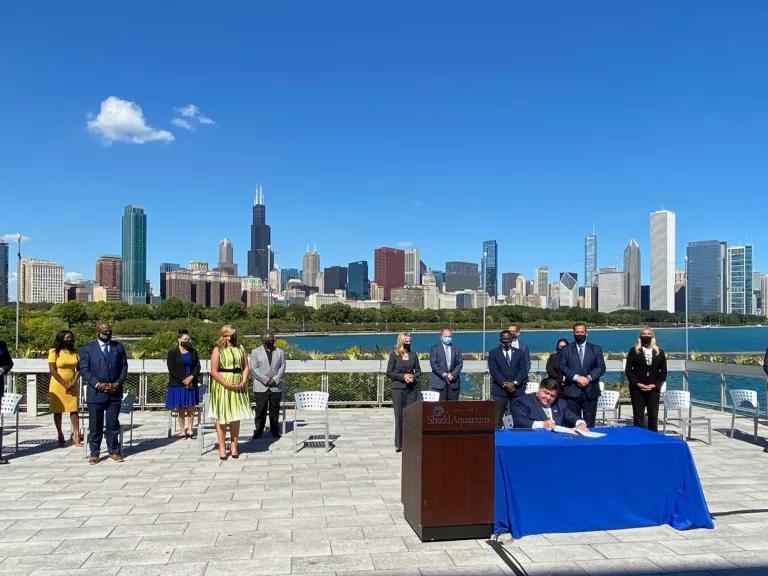
Illinois governor J.B. Pritzker at the Climate and Equitable Jobs Act signing ceremony at the Shedd Aquarium in Chicago, September 15, 2021
J.C. Kibbey/NRDC
Now, Illinois has proven just how quickly the tides can change. This September, Governor J.B. Pritzker signed the Climate and Equitable Jobs Act (CEJA) into law. It stands as one of the most comprehensive pieces of climate legislation ever passed, with a path to 100 percent carbon-free energy by 2045 and an unprecedented focus on workers and equity. Which begs the question: Is this something the rest of the nation can learn from?
Lessons of Climate Bills Past
CEJA originally grew out of a more modest piece of legislation: the 2016 Future Energy Jobs Act (FEJA), which also intended to scale up clean energy and the jobs that support it. While it made some progress improving energy efficiency and cutting consumer costs, its potential to rev up renewables was hamstrung by the political sway of utility and fossil fuel companies.
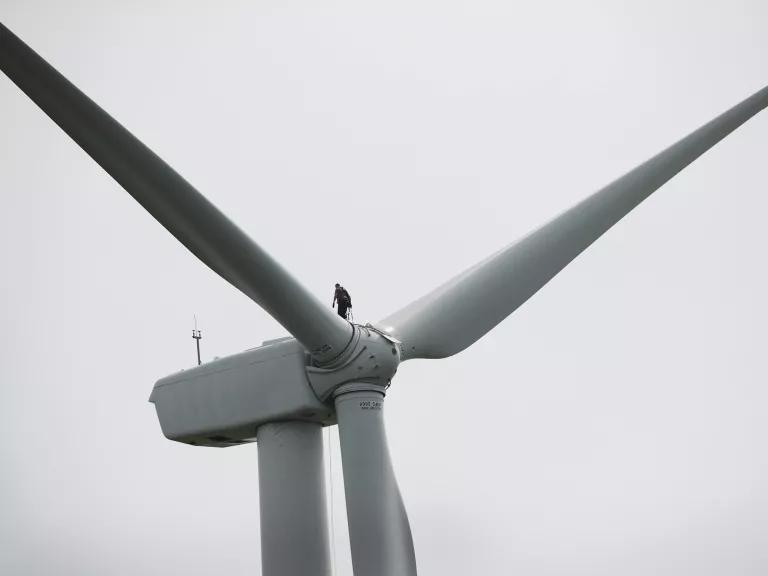
A worker repairing a power-generating wind turbine near Dwight, Illinois
Scott Olson/Getty Images
Advocates also found the legislation was not equitably delivering its benefits. For one, clean energy job training programs were not prioritized or adequately funded, making it harder for low-income workers to get sufficient support and stay enrolled. Even when workers were placed into jobs, wages weren’t as high as promised. And community solar projects that had aimed to make renewables more accessible were being built in rural Illinois, rather than in cities where they were more likely to benefit and bring jobs to communities of color. “The hundreds of millions of dollars in programs and appropriations did not, in large part, find their way back to Black and brown ratepayers,” says Chicagoan Naomi Davis, the founder of Blacks in Green, which helps build clean energy economies in Black communities.
Building a Formidable Coalition
A different strategy was needed to correct those problems. The Illinois Clean Jobs Coalition—which helped pass FEJA—had become bigger, broader, and more ambitious. At the helm were grassroots groups that had been working on climate and environmental justice advocacy across the state for more than a decade, including organizations like the Little Village Environmental Justice Organization and the Southeast Environmental Task Force, as well as the regional arms of national green groups like NRDC.
But now, recognizing that building a truly inclusive clean energy future would require buy-in from the whole of Illinois, the coalition also worked alongside a slew of new allies, from businesses and organized labor groups to consumer advocates and faith-based organizations.
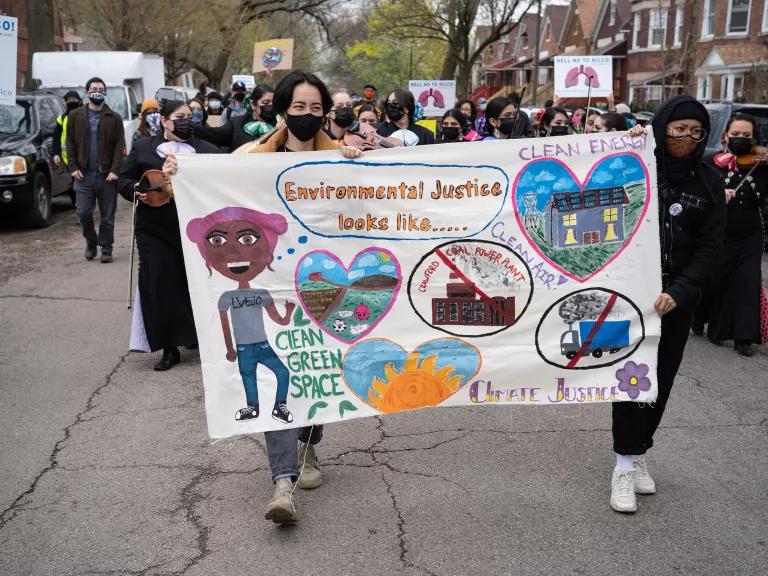
Little Village for Environmental Justice Organization with community partners Unete La Villita, Foro del Pueblo, and Mi Villita Neighbors, along with residents and allies, coming together to remember the environmental disaster caused by Hilco, April 11, 2021
Max Herman
“A lot of the time, labor groups and environmental groups are pitted against one another, but we can have both climate and labor justice,” says Roberto Clack, executive director at the Chicago-based Warehouse Workers for Justice, a member of the coalition. “We work in one of the biggest freight hubs in the country. Diesel particulates and local pollution are huge concerns.” (On its website, the group notes that seven interstate highways crisscross the Chicago region and that the city hosts the third-largest container port in the world, on top of being a major railroad hub.) “We wanted to make sure these big freight and logistics hubs get cleaned up and help out our community in the long-term,” adds Clack.
Beginning in 2018, with the lessons of FEJA in mind, the coalition hosted more than 100 listening sessions in nearly every senate district across the state. “Instead of just sitting in a room somewhere and saying, here’s what we think a just transition to clean energy looks like, we were literally going town to town asking, ‘What do you want to see out of this transition?’” Kibbey says.
“We recognized early on that people were really interested in the jobs piece, especially in communities where there had been lots of disinvestment,” says Reverend Mike Atty, executive director of the faith-based, social justice advocacy group United Congregations of Metro East. The coalition took what they learned from those sessions and began to shape what would be the next generation of climate legislation.
A Shifting Political Culture Meets the Moment
As the coalition changed, so, too, did the political climate in which it was organizing.
In 2018, Illinois voters elected a new generation of legislators who “knew climate change was important, understood the issue, and were ready to go to the mat to support it,” Kibbey says. The state also elected Pritzker as their governor. He ran on a platform of 100 percent clean energy and, once in office, vowed to veto any bill that fell short. Elected officials who acknowledged the reality of climate change now controlled both houses of the state legislature and the governor’s office, giving them an opportunity to shape bold policy solutions.
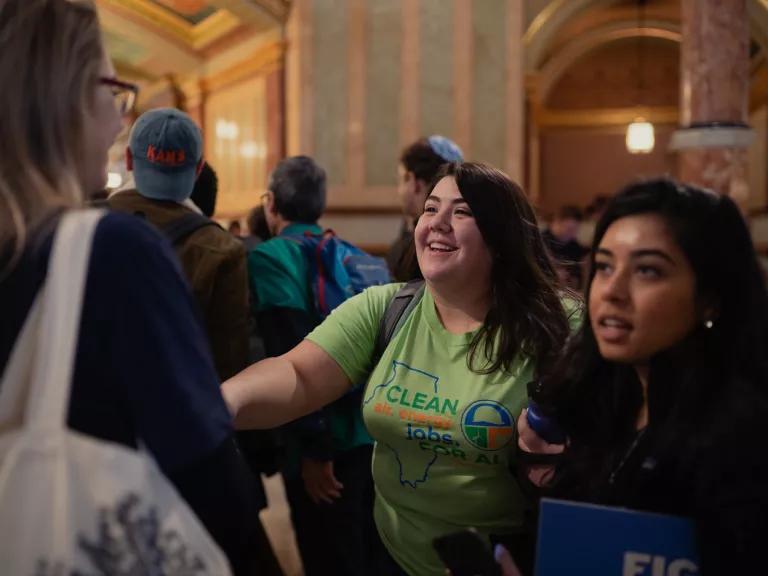
Illinois Youth Climate Strike state director Adelina Avalos and NRDC social media manager Deepti Hossain (right) at a rally on Clean Energy Lobby Day in Springfield, Illinois, October 29, 2019
More broadly, a reckoning with racial injustice across the country made space for long-overdue conversations around environmental racism. Adelina Avalos, an environmental justice advocate with the Illinois Youth Climate Movement, says she threw herself into CEJA advocacy in large part because it was one of the first pieces of legislation she’d seen that actually addressed the long-standing environmental racism she’d witnessed growing up on Chicago’s highly industrial and predominantly Latino Southeast Side. “We were historically a sacrifice zone. Growing up, I thought that was the norm, that everyone’s neighborhood was filled with factories and semi-trucks,” Avalos says.
As a teenager, Avalos began traveling into downtown Chicago each day, where she met peers from other parts of the city that were replete with parks and leafy streets. It was then that Avalos realized not everyone grew up surrounded by pollution. It became clear that a climate bill didn’t just need to reduce emissions. It needed to build a fairer, more just Illinois.
Across the Finish Line
By 2018, the coalition’s campaign for stronger, more equitable clean energy legislation was in full swing. Its members held lobbying days at the state capitol in Springfield. Then in 2019, the coalition proposed the Clean Energy Jobs Act. Tens of thousands of youth climate protestors marched in downtown Chicago to support its passage, drawing the attention of the governor. And even when the pandemic hit, advocacy continued in the form of digital petitions to legislators, text and phone banking, and online education.
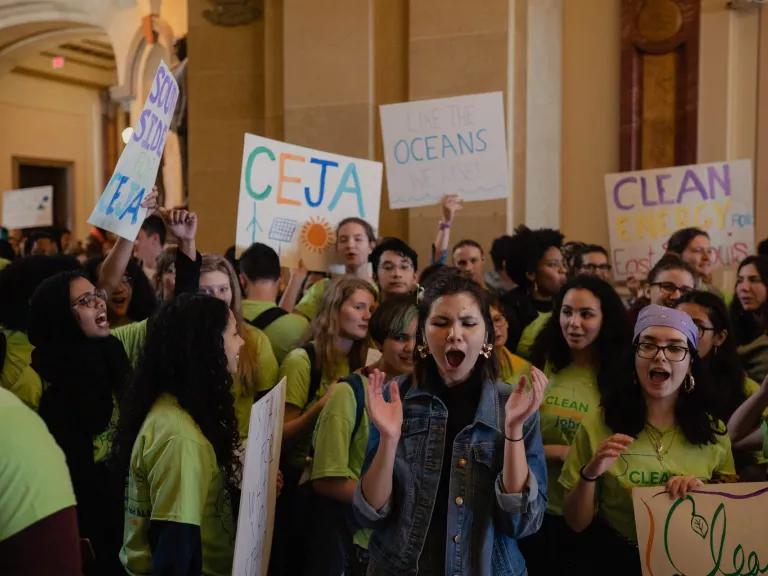
Young activists during Clean Energy Lobby Day in Springfield, Illinois, October 29, 2019
The framework and language of that piece of legislation eventually became the backbone of the 2021 Climate and Equitable Jobs Act.
Still, negotiations to keep CEJA ambitious went down to the wire, with coalition groups and legislators hashing out details over Zoom just hours before the bill’s passing. But the work paid off. In September, CEJA passed with bipartisan support in the House and Senate, and was enacted with a signature from the governor less than 48 hours after that.
A Different Kind of Climate Bill
Thanks to years of dogged advocacy, CEJA met the urgency of the moment.
The landmark law mandates carbon-free power by 2045, making it the first state in the Midwest to completely phase out fossil fuels and one of only eight states to do so nationwide. It will grow renewable energy generation more than fivefold while closing all remaining coal plants, including Prairie State Energy Campus, one of the nation’s top polluters. And it will invest millions into energy efficiency programs while improving oversight of utilities, prioritizing consumers, and moving toward electric vehicles.
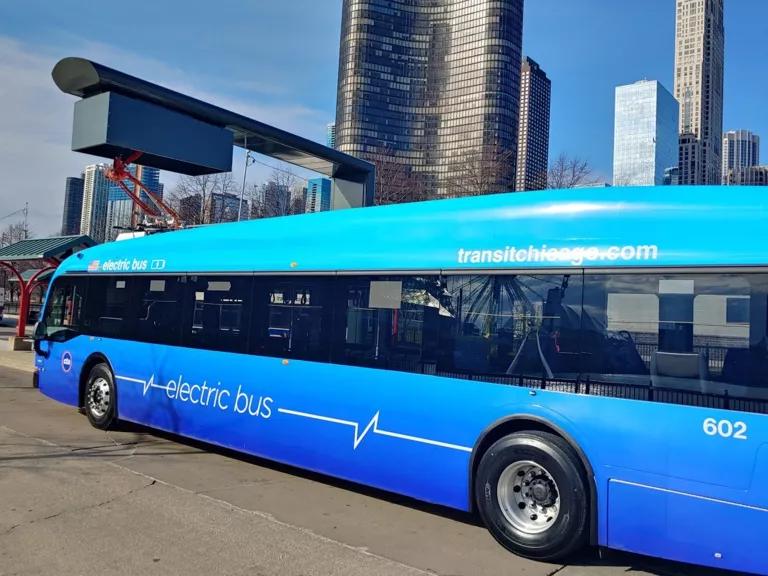
A CTA electric bus at a charging station along the #66 Chicago route
Chicago Transit Authority (CTA)
But the law’s biggest innovations lie with its unprecedented focus on workers and equity.
A network of 13 clean energy job training hubs will soon crisscross the state, with many offering participants stipends to support transportation and childcare. The law also incentivizes clean energy companies to hire these workers once they complete their training programs. “There’s a pipeline to clean energy jobs, from beginning to end,” Kibbey says.
The hubs will also be strategically placed near those who need them most, whether in former coal towns or in historically disinvested communities on the South Side of Chicago, and members of these communities will get first dibs on open spots.
CEJA also invests $30 million annually into contractor incubators in these same communities to ensure that Black and brown residents aren’t just working for someone else in the clean energy economy, but are building wealth and owning their own businesses. The incubators will provide support for small businesses. That means helping to connect them with capital or providing guidance on how to apply for state contracts. “It’s going to put a lot of people in the game that have been kept out of the game,” Davis says.
And that, ultimately, is the point: CEJA embodies what a transition to a clean energy future can and should look like—one that rights past wrongs and brings everyone along.
“Half measures and tinkering around the edges were not going to cut it. The science tells us that without rapid, systemic change, the climate consequences are going to be disastrous,” Kibbey says. “Making that change requires us to continuously redefine the limits of what’s politically possible, and that’s what we did here.”
This NRDC.org story is available for online republication by news media outlets or nonprofits under these conditions: The writer(s) must be credited with a byline; you must note prominently that the story was originally published by NRDC.org and link to the original; the story cannot be edited (beyond simple things such as grammar); you can’t resell the story in any form or grant republishing rights to other outlets; you can’t republish our material wholesale or automatically—you need to select stories individually; you can’t republish the photos or graphics on our site without specific permission; you should drop us a note to let us know when you’ve used one of our stories.


What Biden Should Get Done on Day One (or Close to It)
Failing to Meet Our Climate Goals Is Not an Option
What Is Congestion Pricing?